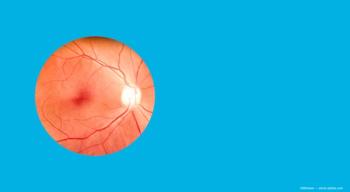
Intraorbital foreign body: Weighing factors for care
Removal of object may depend on potential risk, impact on patient’s vision
Whether an intraorbital foreign body is vegetative or metallic and anteriorly or posteriorly located influences the approach to imaging and decisions on surgical removal.
Reviewed by H.B. Harold Lee, MD
Detection and management of an intraorbital foreign body in patients who have sustained orbital trauma can differ depending on the material involved and its location, according to H.B. Harold Lee, MD, private practice,
As a general rule, Dr. Lee said that he tries to remove any intraorbital foreign body when he believes the procedure can be done safely and successfully based on the location of the object.
“I try to remove any intraorbital foreign body if it is anteriorly located,” he said. “I also try to remove a vegetative foreign body even if it is posteriorly located because of the increased risk of infection with vegetative material. Unless there is a good indication for removal, however, I will usually leave a posteriorly located metallic foreign body.”
Metallic foreign bodies
A BB gun pellet is the most common type of metallic intraorbital foreign body seen in the United States, accounting for up to three-fourths of such cases. Typically, the pellets used in the United States are made of steel and zinc, and do not pose a risk of lead poisoning if left in situ.
“Removing shotgun shell is more reasonable in theory because these shells contain a significant amount of lead,” Dr. Lee said. “However, in a search of the literature, I could not find any reported cases of lead poisoning from a retained intraorbital or intracranial foreign body.”
Dr. Lee added that the location of the metallic foreign body also influences management, considering that when it is more posterior, the visual outcome is more likely to be worse.
“Weighing the difficulty and risks of the surgery against the potential benefits, surgeons may decide against removing a posteriorly located foreign body in a patient whose potential vision is poor,” he explained.
Vegetative foreign bodies
Physicians who see patients with orbital trauma should know that in cases involving vegetative material, foreign body size inversely correlates with time to presentation.
This fact was demonstrated by the findings of one published case series showing that patients with a wooden foreign body < 2 cm in size did not present for at least 72 hours post-injury. An inflammatory response in the orbit typically prompted the patients to seek medical care. Another important consideration in cases of vegetative intraorbital foreign bodies is that they may be missed on initial CT scan of the orbit if the imaging is performed at a window width of 200-350 HU. Dr. Lee recommended requesting that CT imaging be done with a bone window setting (4,000 HU) when a vegetative foreign body is suspected.
“The increased window width increases the background signal of the orbital fat,” Dr. Lee said. “Therefore, it is helpful for discerning wooden intraorbital foreign bodies and may eliminate the need for further evaluation with magnetic resonance imaging.” Although there is a greater risk for infection with vegetative intraorbital foreign bodies compared with metallic foreign bodies, it is a common misconception that there is a high incidence of fungal infection with vegetative material.
According to the literature, the most common pathogens causing infections in cases of vegetative intraorbital foreign bodies include Staphylococcus epidermidis, S. aureus,
Enterobacter agglomerans, Clostridium perfringens, Escherichia coli, Serratia marcescens, and Citrobacter freundii. “The chance of a fungal infection in these cases is very low, and so antifungal treatment is not recommended for these patients,” Dr. Lee concluded.
Disclosures:
H.B. Harold Lee, MD
E: [email protected]
Dr. Lee has no relevant financial interests to disclose.
Newsletter
Don’t miss out—get Ophthalmology Times updates on the latest clinical advancements and expert interviews, straight to your inbox.


















































.png)


